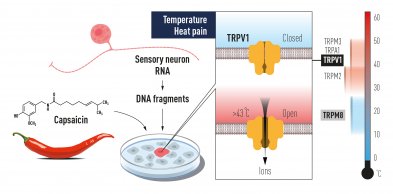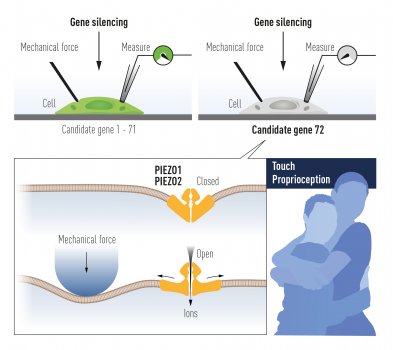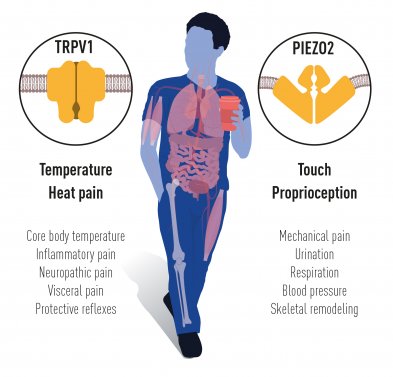The Nobel Prize in Medicine or Physiology has been announced by the famous Karolinska Institute in Sweden in a timely manner. The two have been jointly nominated for the 2021 Medical Award. Ardam Pataputian and David Julius have jointly won the Nobel Prize in Medicine for their important research on important sensations in our body, such as temperature and how touch works. Let's find out now from these two Nobel laureates.
Ardem Patapoutian is an American molecular biologist, neuroscientist. He was born in Beirut, Lebanon, but later moved to the United States, where he completed the rest of his studies. While in Beirut, he was a student at the American University of Beirut. He received his Bachelor of Science degree from the University of California, Los Angeles in the United States. He completed his PhD research from the University of California, California (Caltech). While postdoc at the University of California, San Francisco, he studied some of the special neurons that give our bodies a sense of pain and touch.

Another Nobel laureate, David Jay Julius, was born in Brighton Bridge, Brooklyn, USA. He completed his undergraduate degree from the Massachusetts Institute of Technology (MIT) in the United States. He later received PhD research from the University of California, Berkeley, and postdoctoral training from Columbia University.
While at the University of California, Berkeley, and Columbia University, he began working with psilocybin mushrooms, and LSD. Later, from this study, he became interested in research on how these things work with different receptors in the human body. Using the ‘capsaicin’ compound derived from our familiar pepper, which creates a ‘burning sensation’, David Julius finds a sensor at the nerve-ending in the skin of the body, which is sensitive to heat.

And Ardem Pataputian discovered some new species of sensors that use 'pressure sensitive' cells, which stimulate the body's internal organs, and the skin's mechanical sensations. Such discoveries help us understand how our nervous system is stimulated toward heat, cold, and mechanical sensations. The two Nobel laureates have found one thing that has helped us to find the 'missing link' of the complex interaction of feelings and the environment.
In the seventeenth century, the philosopher Renেনে Descartes speculated that our brain may have some connection with the skin of different parts of our body. The existence of specialized sensory neurons was later proved. In 1944, Joseph Arlanger and Herbert Gasser were awarded the Nobel Prize in Physiology for their discovery of different types of sensory neuron fibers - which stimulated different sensations. Before the discovery of David Julius, and Ardem Pataputian, we had an unresolved question, how did the temperature and mechanical sensitivity of our nervous system become electrical signals?
In the late 1990's, David Julius, at the University of California, San Francisco, analyzed the capsaicin compound found in pepper and speculated on a possible solution to how the body produces a burning sensation. Scientists knew that capsaicin activates nerve cells by creating a sensation of pain. But how this chemical does this work was unknown. Julius and his colleagues built a library of millions of DNA fragments whose genes arouse feelings of pain, heat, or touch in our bodies.
After much research, a single gene was found that made cells sensitive to capsaicin. Eventually a genes sensitive to capsaicin were found. Subsequent studies have shown that the specific gene encodes a new species of ion channel protein, and the newly discovered capsaicin receptor is named TRPV1. When Julius was testing the protein's ability to sensitize to heat, he realized that he had actually invented a 'heat sensing receptor' that activates the sensation of temperature as painful.

Separately, David Julius, and Pataputian discovered TRPM8 using a chemical called 'menthol' - which shows a sensitivity to cold. These experiments were performed on genetically manipulated mice in a number of laboratories.
Researchers have previously found ‘mechanical sensors’ in bacteria but did not know how the mechanism works in complex organisms such as vertebrates. Pataputian, and his colleagues discovered a new 'mechanosensitive ion channel' by research in the Scapes Research Lab. That ion channel is named Piezo1. He later discovered a similarity with this gene and named it Piezo2. From this discovery it is understood that these two genes are important for 'Sense of Touch'! That is, it plays an important role in controlling blood pressure, respiration and bladder.

The TRPV1 gene shows sensitivity to temperature, and various types of heat pain, such as inflammatory pain, cerebral palsy, pain in various organs, and so on. On the other hand, a gene called Piezo2 is sensitive to mechanical pain, urination, shortness of breath, blood pressure, body movement, etc.

This discovery by David Julius and Pataputian will further enrich the knowledge of the treatment of various disease conditions like 'Chronic Pain'. It is expected to usher in a new revolution in the medical world.

